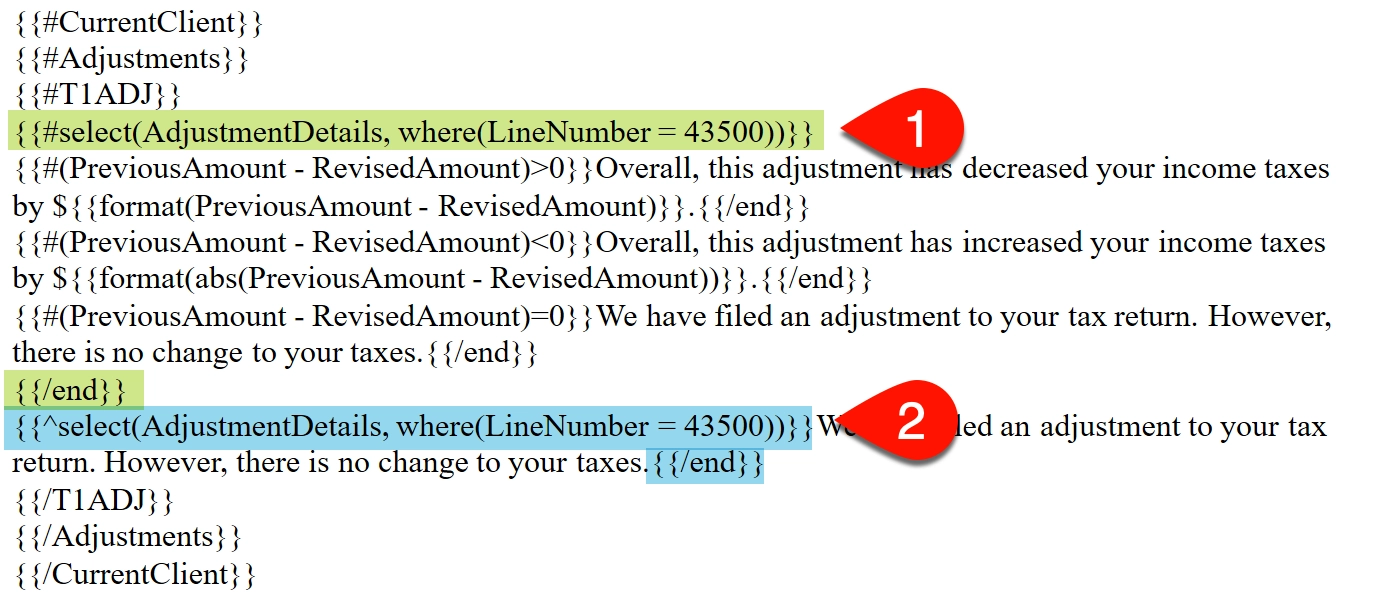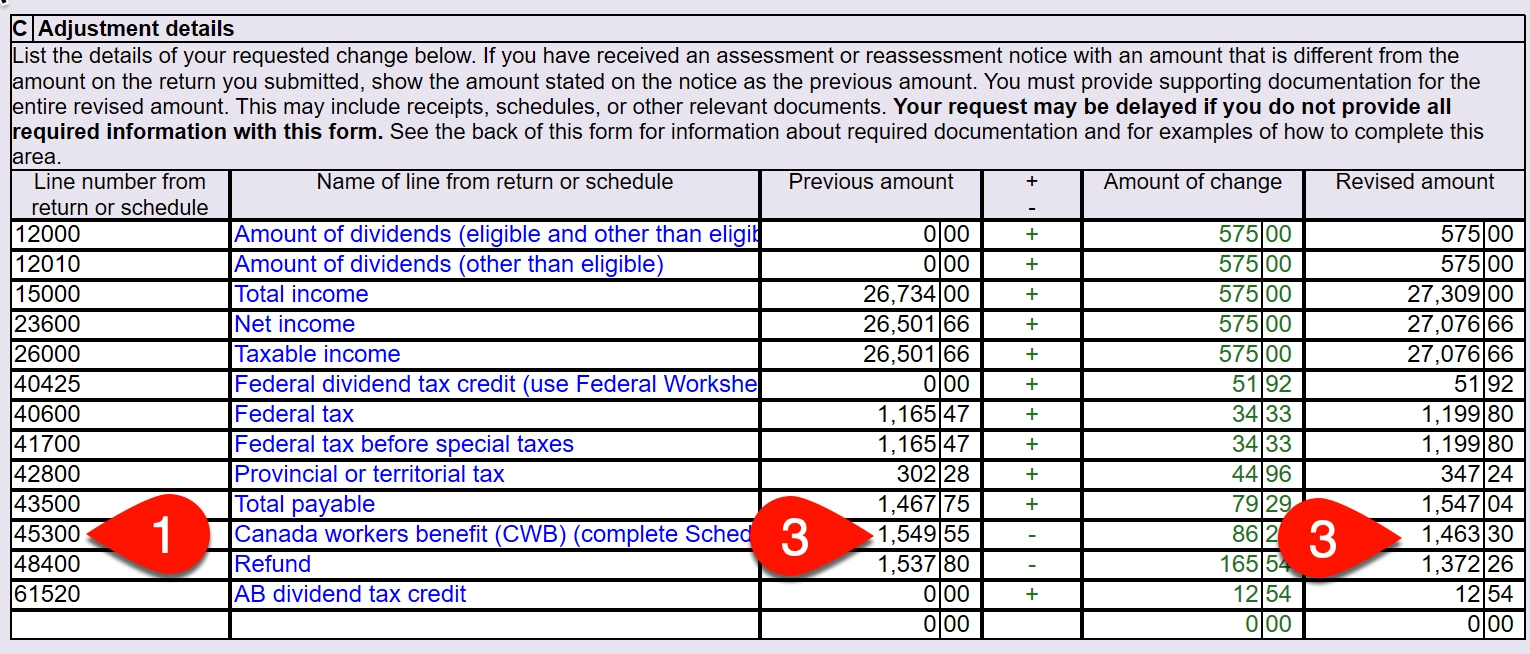Updated: 2025-06-30
Use select() to select a specific row of a table based on data in one of the cells.
When writing a condition with this function, using a # (number sign) will check so see whether the line number appears. Whereas, using a ^ (caret) will check for the absence of the number.
For example, to display details from specified lines on the T1-ADJ:


{{#CurrentClient}}{{#Adjustments}}{{#T1ADJ}}{{#select(AdjustmentDetails, where(LineNumber = 43500))}}{{#(PreviousAmount - RevisedAmount)>0}}Overall, this adjustment has decreased your income taxes by ${{format(PreviousAmount - RevisedAmount)}}.{{/end}}{{#(PreviousAmount - RevisedAmount)<0}}Overall, this adjustment has increased your income taxes by ${{format(abs(PreviousAmount - RevisedAmount))}}.{{/end}}{{#(PreviousAmount - RevisedAmount)=0}}We have filed an adjustment to your tax return. However, there is no change to your taxes.{{/end}}{{/end}}{{^select(AdjustmentDetails, where(LineNumber = 43500))}}We have filed an adjustment to your tax return. However, there is no change to your taxes.{{/end}}{{/T1ADJ}}{{/Adjustments}}{{/CurrentClient}}
